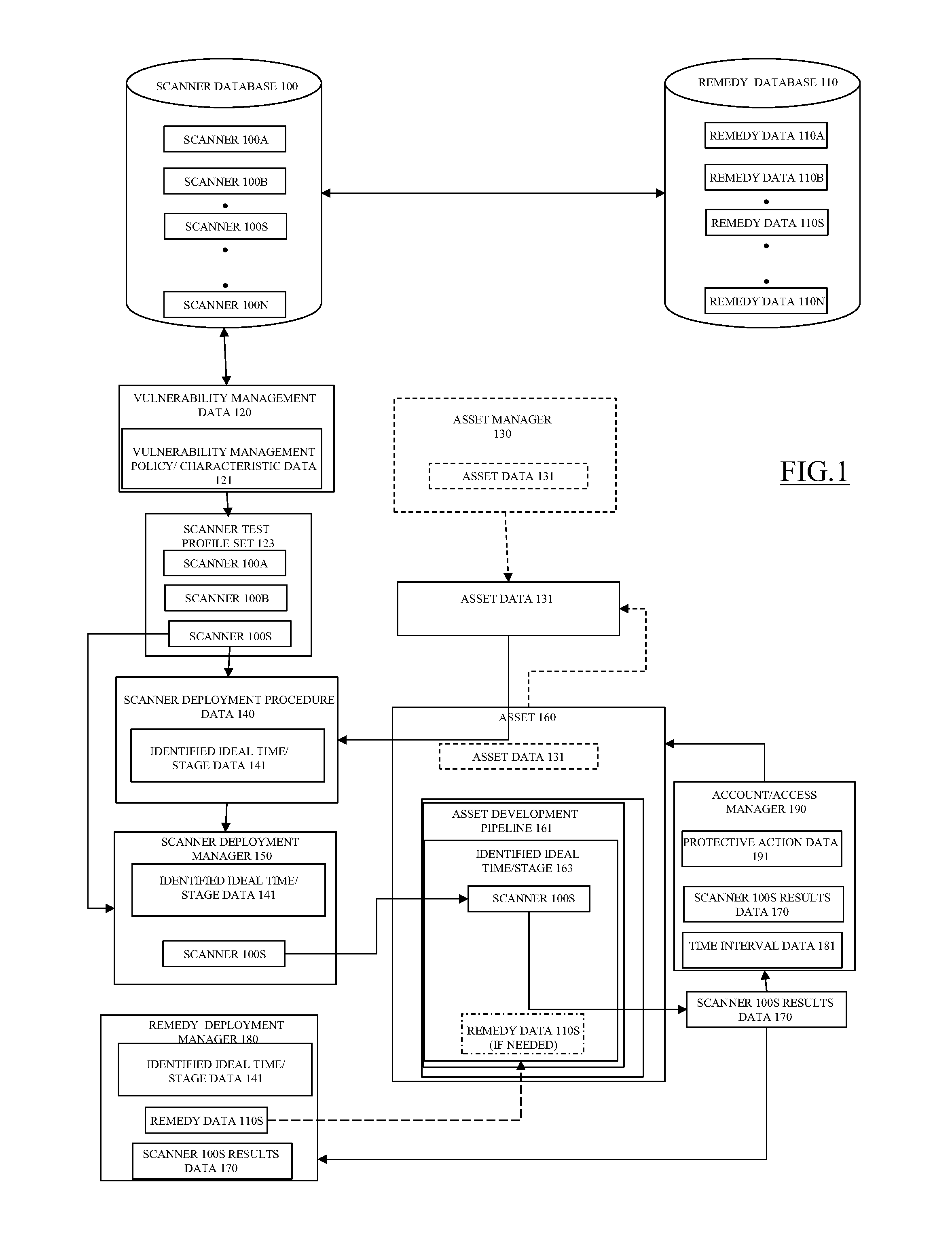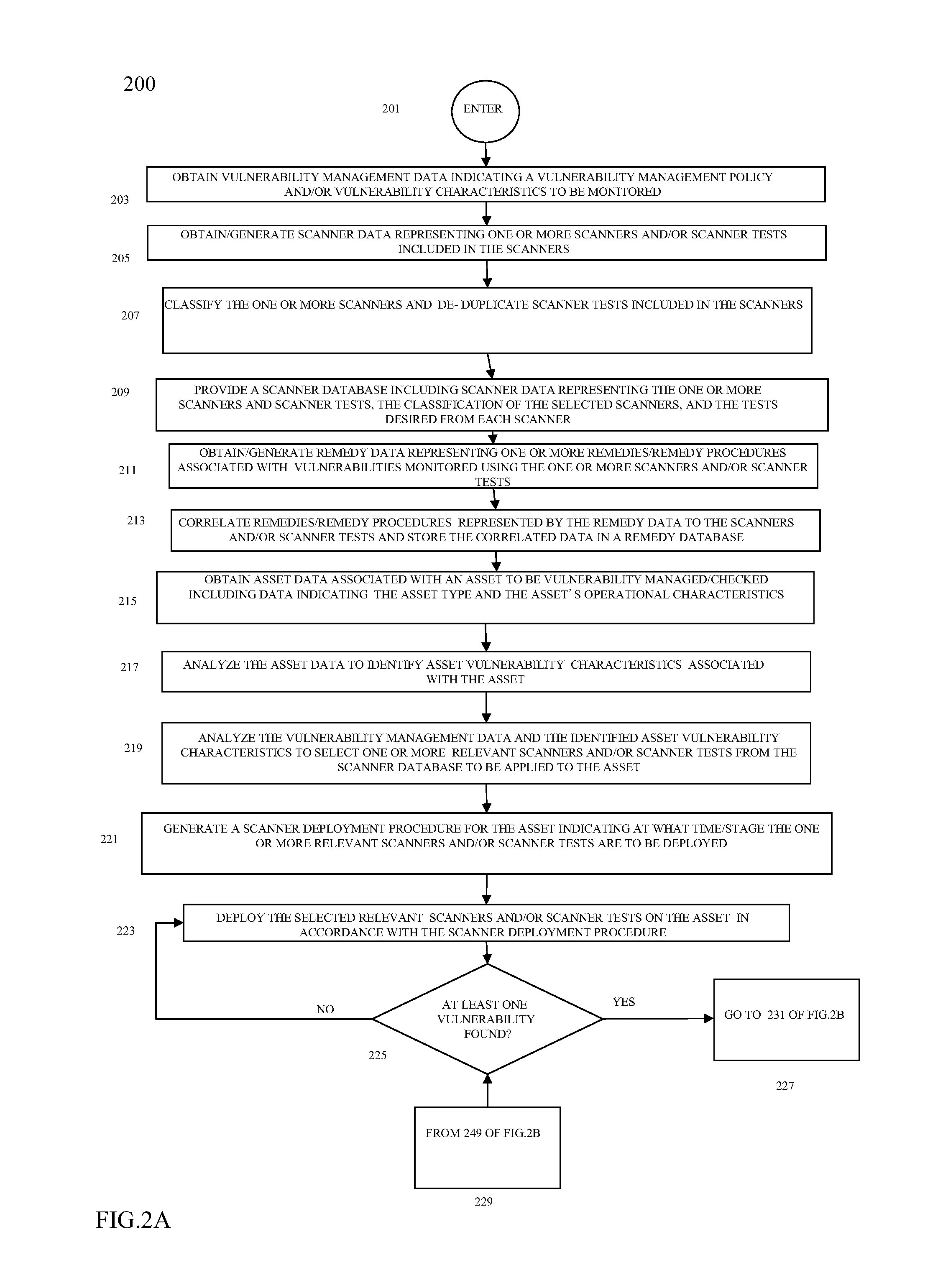Method and system for dynamic and comprehensive vulnerability management
a vulnerability management and vulnerability technology, applied in the field of dynamic and comprehensive vulnerability management, can solve problems such as vulnerability in any of the often numerous assets provided and/or utilized in a cloud-based infrastructure, complete migration of various capabilities and systems, etc., and achieve the effect of mitigating the vulnerability of the ass
- Summary
- Abstract
- Description
- Claims
- Application Information
AI Technical Summary
Benefits of technology
Problems solved by technology
Method used
Image
Examples
Embodiment Construction
[0016]Embodiments will now be discussed with reference to the accompanying FIGS., which depict one or more exemplary embodiments. Embodiments may be implemented in many different forms and should not be construed as limited to the embodiments set forth herein, shown in the FIGS., and / or described below. Rather, these exemplary embodiments are provided to allow a complete disclosure that conveys the principles of the invention, as set forth in the claims, to those of skill in the art.
[0017]In accordance with one embodiment, a method and system for dynamic and comprehensive vulnerability management includes a process for dynamic and comprehensive vulnerability management whereby vulnerability management data is obtained from one or more sources.
[0018]In one embodiment, the vulnerability management data includes data indicating a vulnerability management policy, specified vulnerabilities, and vulnerability characteristics to be identified and monitored. In one embodiment, the vulnerabi...
PUM
 Login to View More
Login to View More Abstract
Description
Claims
Application Information
 Login to View More
Login to View More - R&D
- Intellectual Property
- Life Sciences
- Materials
- Tech Scout
- Unparalleled Data Quality
- Higher Quality Content
- 60% Fewer Hallucinations
Browse by: Latest US Patents, China's latest patents, Technical Efficacy Thesaurus, Application Domain, Technology Topic, Popular Technical Reports.
© 2025 PatSnap. All rights reserved.Legal|Privacy policy|Modern Slavery Act Transparency Statement|Sitemap|About US| Contact US: help@patsnap.com



